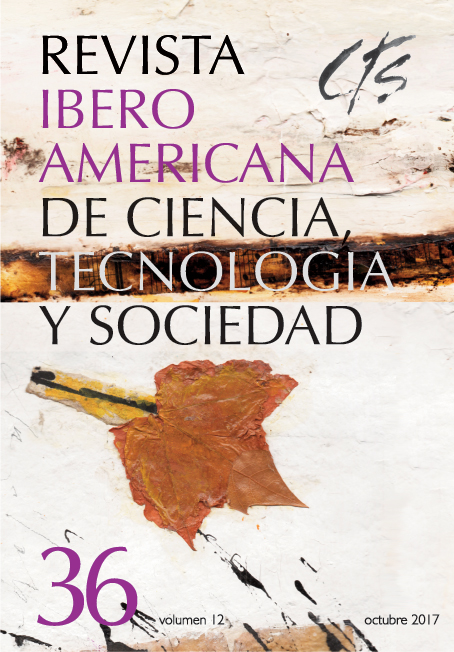The Circumlocutions Of Technique: In What Sense Do Technique And Creativity Configure A Singular Identity That Unfolds And Opposes Itself To Other Spheres Of Knowledge And Humanity?
Keywords:
technique, technology, context, identityAbstract
Reflecting on technique as a concept alerts us, primarily, to the identities, particularities and differences between technique and technology (considering the current modern context that highlights and opposes one to the other). Therefore, it is possible to outline different paths with regard to the methods, means and contexts that each one has in relation to: knowledge, processes, methods, propagation (reach, risk and effect), appropriation and conception. We shall pay special attention to the meaning and sense of the technical phenomenon, believing that technique, as a human segment, can be understood in a comprehensive and significant spiraling way, as a part of our own nature of doing-being that is found straining its nature and content. In addition, we see that the capacity that we have as humans to be surprised, sheltered and amazed (to see and identify ourselves in the identity) by the technical labor associated to objects derived from human creativity, moves away from a “sterile and neutral”, mechanical or organic, projection that confines technique to a simple, and removed in time, uprooted artifactualism. Our question will be: in what sense do technique and creativity configure a singular identity that unfolds and opposes itself to other spheres of knowledge and humanity?Downloads
References
BUSTOS, E. (2002): “La metáfora y la filosofía contemporánea del lenguaje”, Revista de Filosofía, n° 19.
DERRY, T. y WILLIAMS, T. (1986): Historia de la Tecnología. Antigüedad hasta 1750, Madrid, Siglo XXI Editores.
ELLUL, J. (1989): “Técnicas. I: Situaciones”, Revista de Documentación Científica de la Cultura, n° 14, Barcelona, Anthropos.
GEERTZ, C. (1997): La interpretación de las culturas, Barcelona, Editorial Gedisa.
KRANZBERG, M. y PURSELL, C. (1981): Historia de la Tecnología. La técnica en Occidente de la Prehistoria a 1900, 2 vol., Barcelona, Gustavo Gili.
LEROI-GOURHAN, A. (1988): El Hombre y la Materia, Evolución y Técnica I, El Medio y la Técnica (Evolución y Técnica II), Madrid, Editorial Taurus.
LÉVI STRAUSS, C. (1964): El pensamiento salvaje, México, FCE.
LÉVI STRAUSS, C. (1987): Antropología Estructural, Barcelona, Paidós Ibérica Editorial.
MUMFORD, L. (1969): El mito de la máquina, Buenos Aires, Emecé.
MUMFORD, L. (1971): Técnica y civilización, Madrid, Alianza Universitaria.
ORTEGA Y GASSET, J. (1992): Meditación de la técnica y otros ensayos sobre ciencia y filosofía, Madrid, Alianza Editorial.
PYTLK, E., LAUDA, D. Y JOHNSON, D. (1978): Tecnología, cambio y sociedad, México D.F., Representaciones y Servicios de Ingeniería S.A.
ROSALES, A. (2001): Una antropología de la técnica: perspectivas de una
antropología de la técnica, Escuela de estudios generales, Editorial de la Universidad de Costa Rica.
SANMARTÍN, J. (1990): Tecnología y futuro Humano, Barcelona, Anthropos.
SCRUTON, R. (1999): Filosofía moderna: una introducción sinóptica, Santiago de Chile, Editorial Cuatro Vientos.
Downloads
Published
How to Cite
Issue
Section
License
All CTS's issues and academic articles are under a CC-BY license.
Since 2007, CTS has provided open and free access to all its contents, including the complete archive of its quarterly edition and the different products presented in its electronic platform. This decision is based on the belief that offering free access to published materials helps to build a greater and better exchange of knowledge.
In turn, for the quarterly edition, CTS allows institutional and thematic repositories, as well as personal web pages, to self-archive articles in their post-print or editorial version, immediately after the publication of the final version of each issue and under the condition that a link to the original source will be incorporated into the self-archive.











